Gina Fischli/Mike Kelley at Galerie Hussenot
By Pierre-Alexandre Mateos & Charles Teyssou
Opening October 13th 2023
Until November 10th
On today's menu at Galerie Hussenot, Mike Kelley's landmark installation Liquid Diet (1989-2006) collides with a series of new sculptures by Gina Fischli.
In Liquid Diet, the Californian artist proposes a gargoyle-like Irish pub architecture composed of beer jerrycans, haggard shamrocks and leprechauns, sly little red and green old men from Craic folklore. This installation by CalArt's little master becomes the stage for an ethylic purge, a Christ-like scene rendered in all its triviality. The party's over and the toilets are dirty. On the walls are three videos of incarcerated Catholic IRA activists, including Bobby Sands, who embarked on a fatal hunger strike. Sand and his comrades will smear the prison walls with trails of shit, a tragic gesture in which the body is the last political bastion in this troubled period when Catholics and Protestants clash. This banquet of civil war is a triumph of incontinence, with every orifice overflowing.
Perhaps this is the effect of Kelley's rereading of Mark Rothko's Seagram Paintings on one of the walls of this fetid tavern. His horizontal formats of Dark Color Field Paintings were originally designed for the Four Seasons restaurant in New York and were intended to make customers sick. Rothko's deep green, brown and orange are here relegated to the banal clutter of physical fluids: vomit, excrement and urine spat out by terminally ill clients. The spiritual transcendence of the abstract artist (who thought of his paintings as temples) is desacralized and reduced to earthly crudity. Kelley thus pursues his project of overturning Western metaphysics by placing the body above the mind, libidinal and Dionysian energy prevailing over cerebrality and beautiful Apollonian form. Through these networks of symbols and information, the whole machine of sublimation and desublimation dear to Mike Kelley is at work here, organic Catholic Taste* versus hygienism and Protestant politeness, the lower 1 middle class versus the taste of a hushed bourgeoisie.
Overlooking this scene, Gina Fischli leads us into sugar palaces, à la Antonin Carême "the Chef of Kings, and the King of Chefs". Dotted, lacquered, and glazed, these small-scale delights mimic the architecture of dungeons, turrets and ceremonial gardens, to which romantic pilgrimages might be made. Inspired by medieval or neo-Gothic German and English castles, these pastry-like plaster sculptures seem to be the result of some childish recipe devised by Franz West and Walt Disney. Yet there's something off about their appearance, as if they're wobbling or suffering from a baking defect. Seen from another angle, they appear limp, a little crude. If not something out of an an episode of Kitchen Nightmares, her saccharine fantasies might otherwise be the fruit of ruthless competition between overworked mothers tirelessly working to deliver the perfect cake. Panic in Beverly Hills.
Behind her sugar-coated fanciful monuments, the artist pokes fun at a guilty, pallid aristocracy, as if their ornamental pretensions might be debased by a slather of more whipped cream. Castles, or indeed ambassadors’ pastries, have the perverse quality of concealing conflicts and family secrets too unseemly to reveal. Fischli’s follies might be seen alongside Brecht and his erudite distinctions between so-called noble art and the amateurism of the kulinarisch, the Neuschwanstein of the shop window. Her works, which assume a shared sense of fatigue and backstage hazards, leave us to our own mischief, between delight and disillusionment, credulity and disenchantment.
In their aesthetic quest, the two artists espouse the phenomenology of disgust that embarrasses the hierarchy of values. A taste of disgust, expressed by excess and defilement in the case of one artist, or by clumsy frivolity in the case of the other. Excess and waste are thus eliminated in ritualized forms: a sordid Saint Patrick's Day or a culinary plastic contest. Taking loose, grimacing paths, they expose us to discounted myths, states of descent and pallid tomorrows, from which we observe the world with a severe hangover.
*Mike Kelley : Catholic Tastes, Whitney Museum, 1993
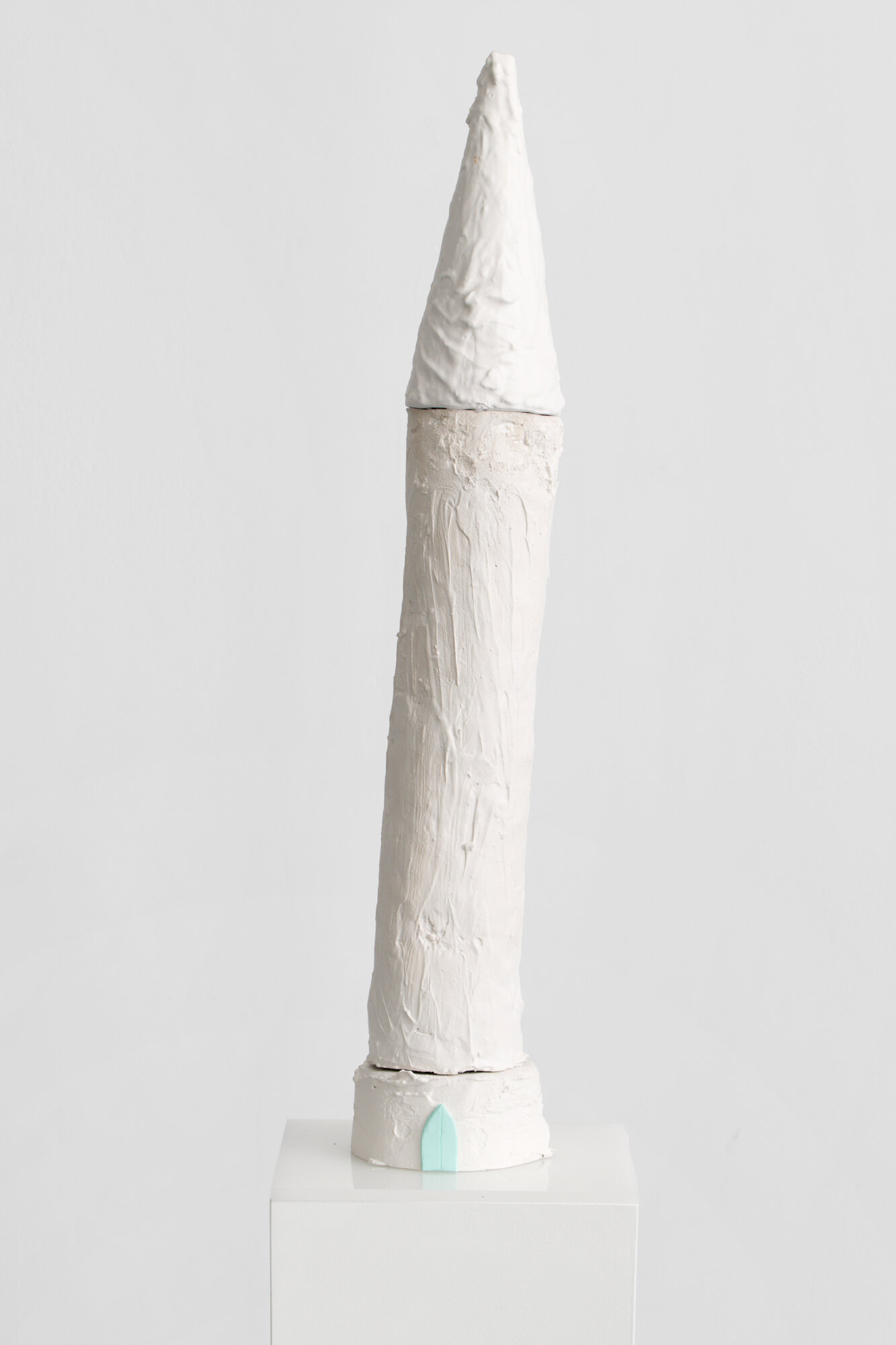
Gina Fischli
'Balmoral', 2023
Plaster paint
40 × 40 × 80 cm
Unique
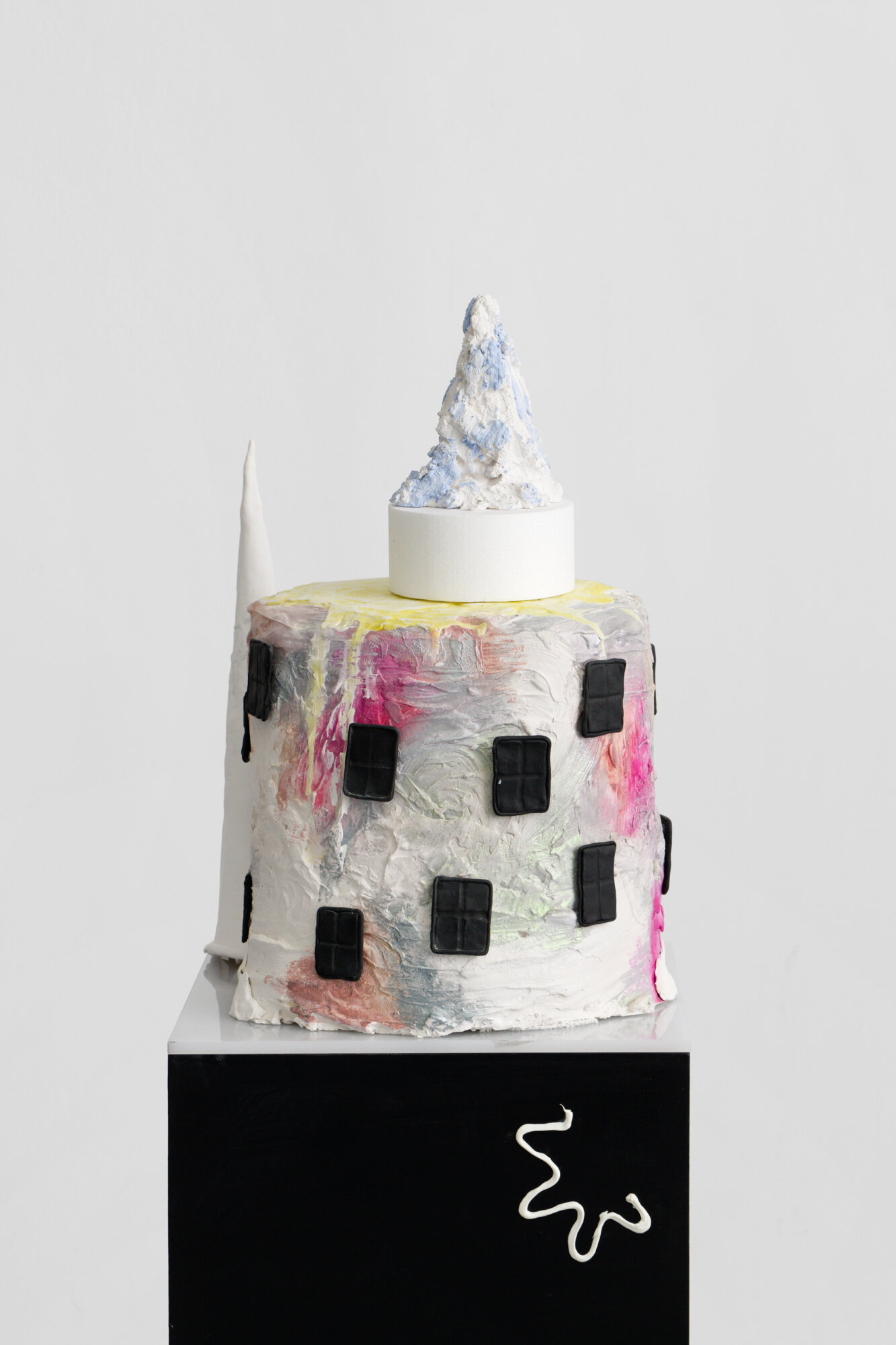
Gina Fischli
'Burg Klopp', 2023
Plaster paint
40 × 40 × 61 cm
Unique
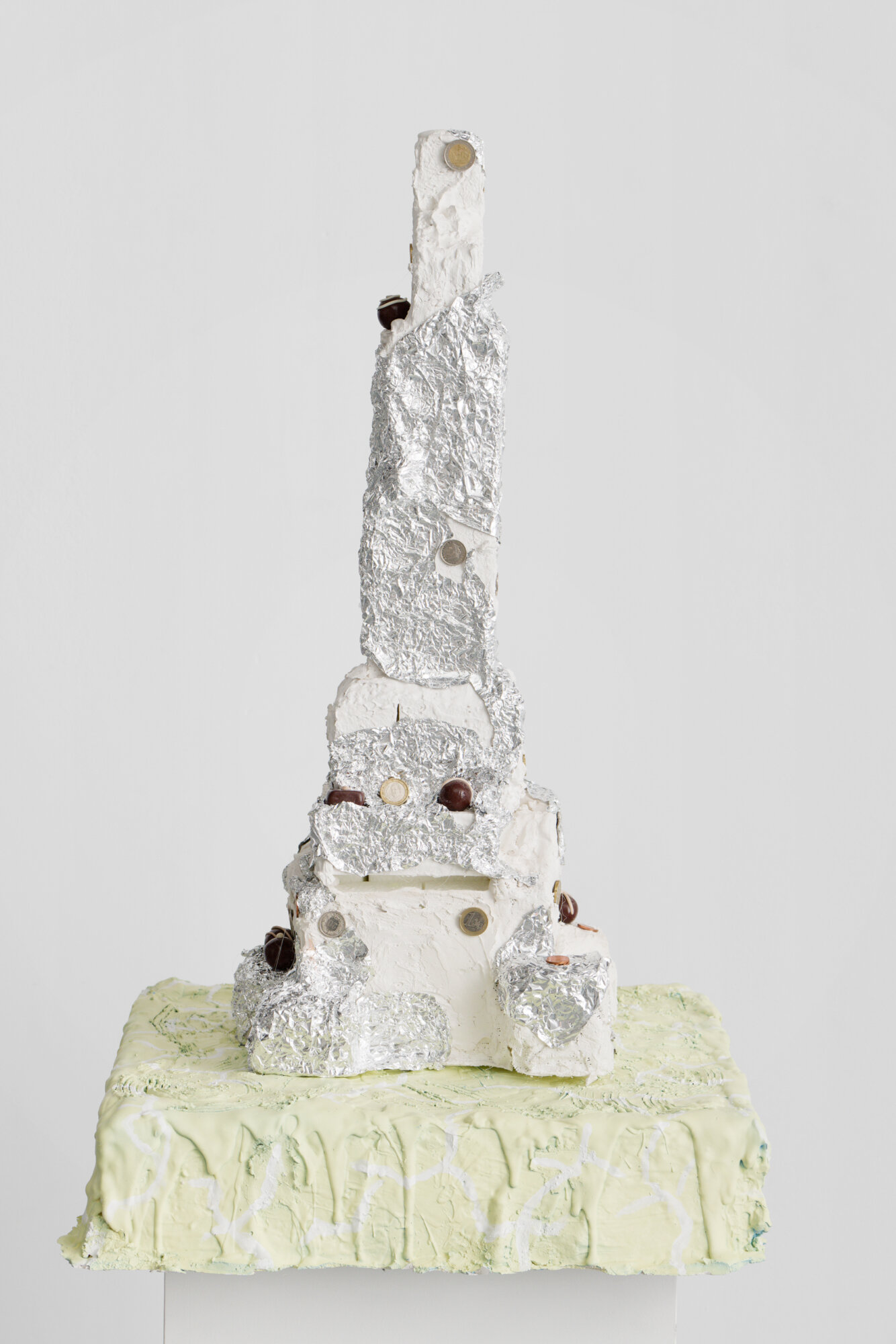
Gina Fischli
'Empire State', 2023
Plaster paint
53 × 53 × 95 cm
Unique
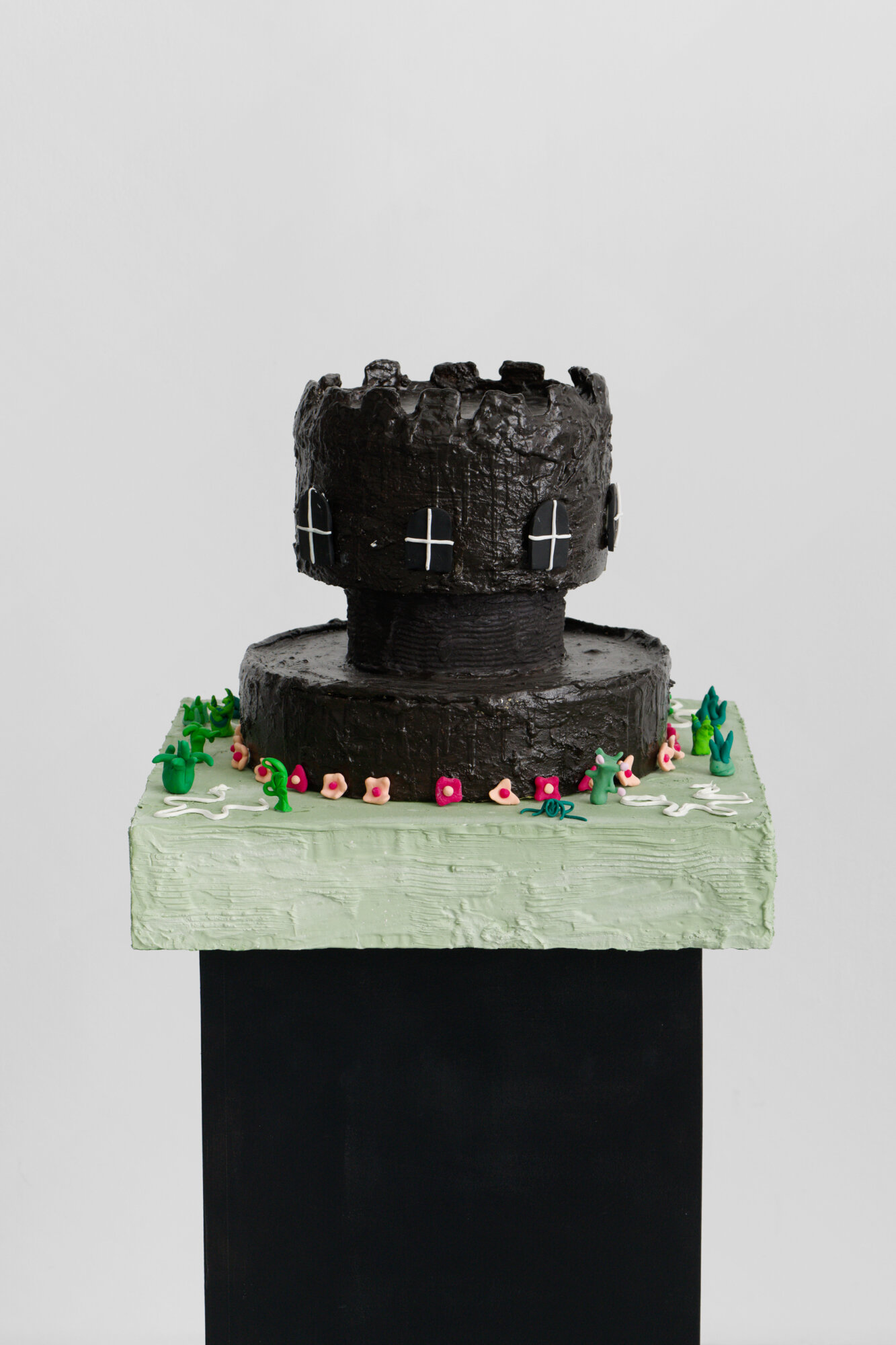
Gina Fischli
'Kyburg', 2023
Plaster paint
51 × 51 × 51 cm
Unique
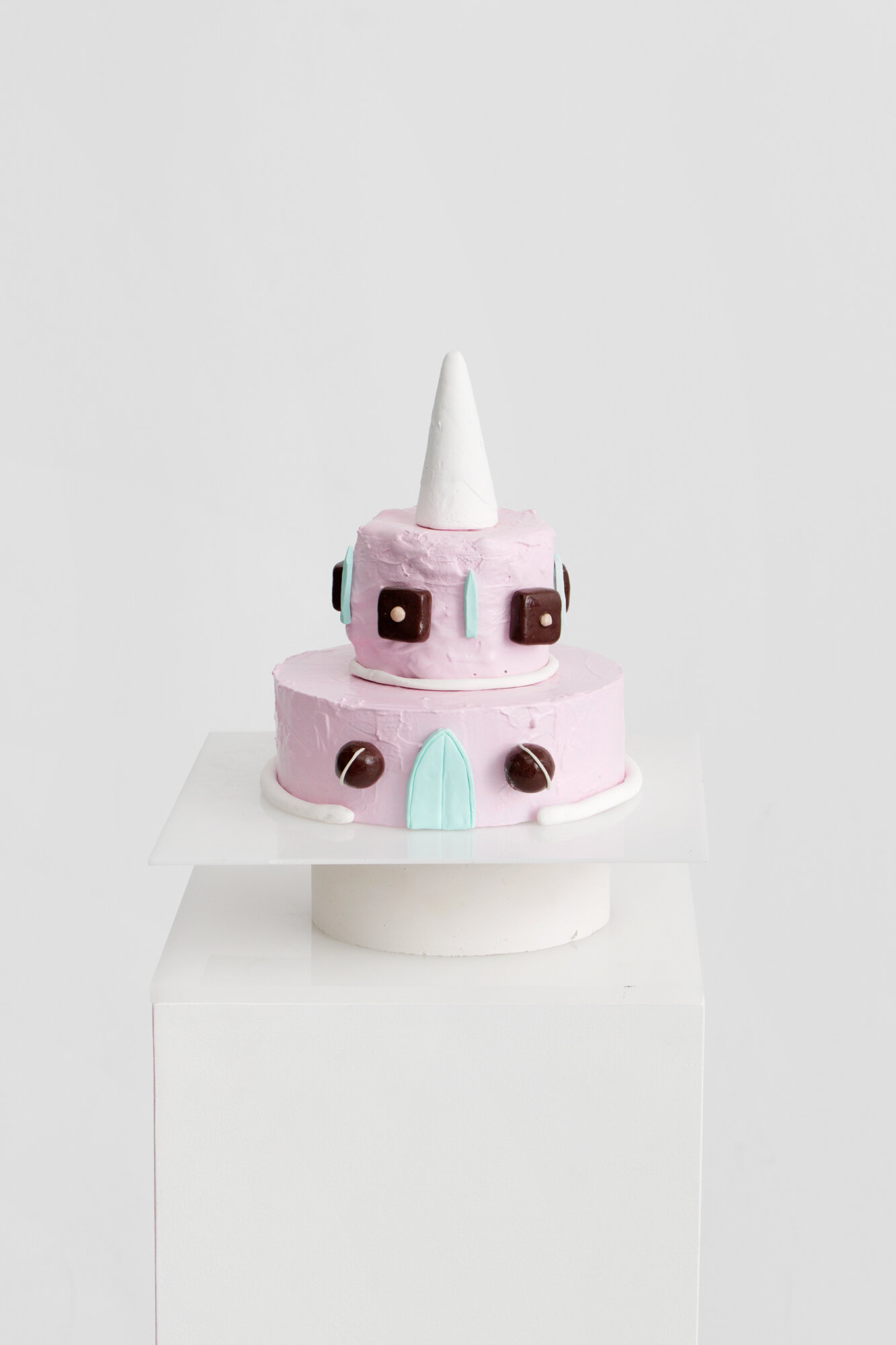
Gina Fischli
'Pink Palace', 2023
Plaster paint
30 × 30 × 34 cm
Unique
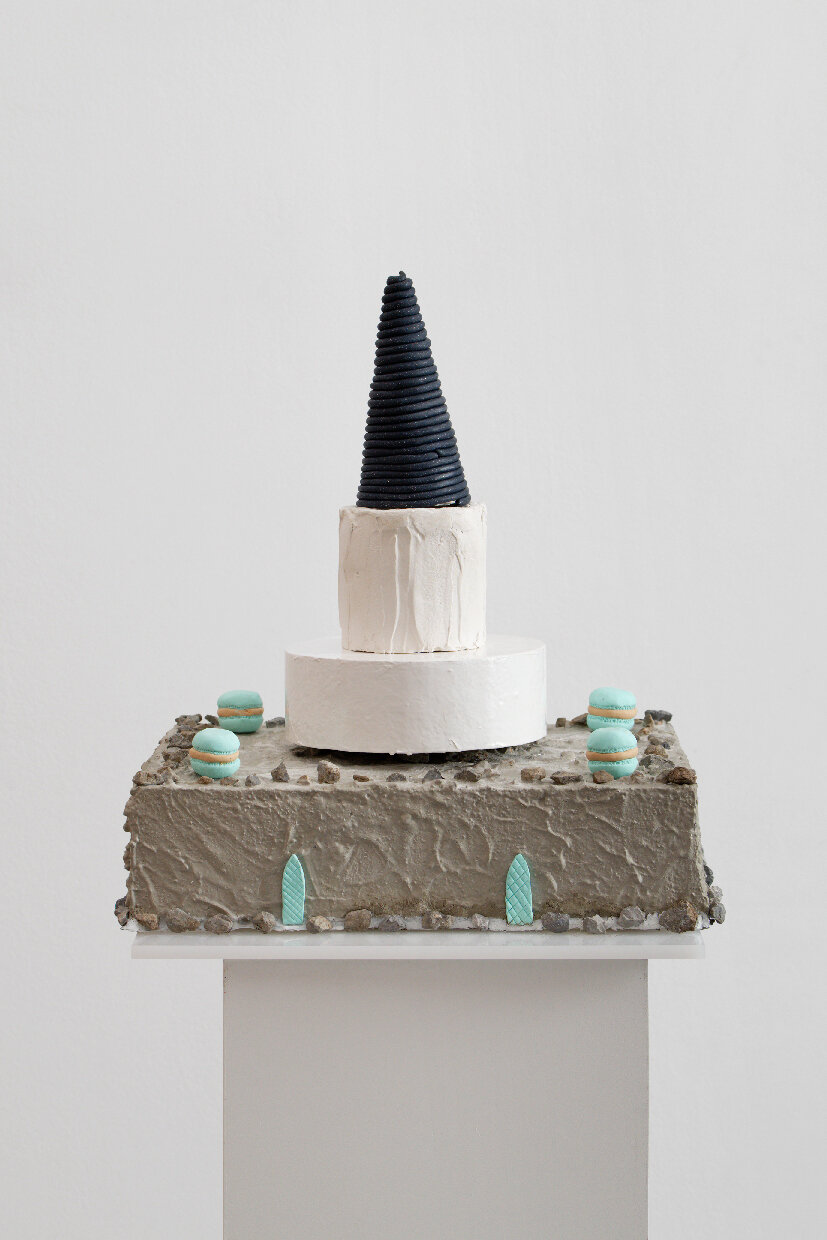
Gina Fischli
'Rheinstein', 2023
Plaster paint
32 × 42 × 40 cm
Unique
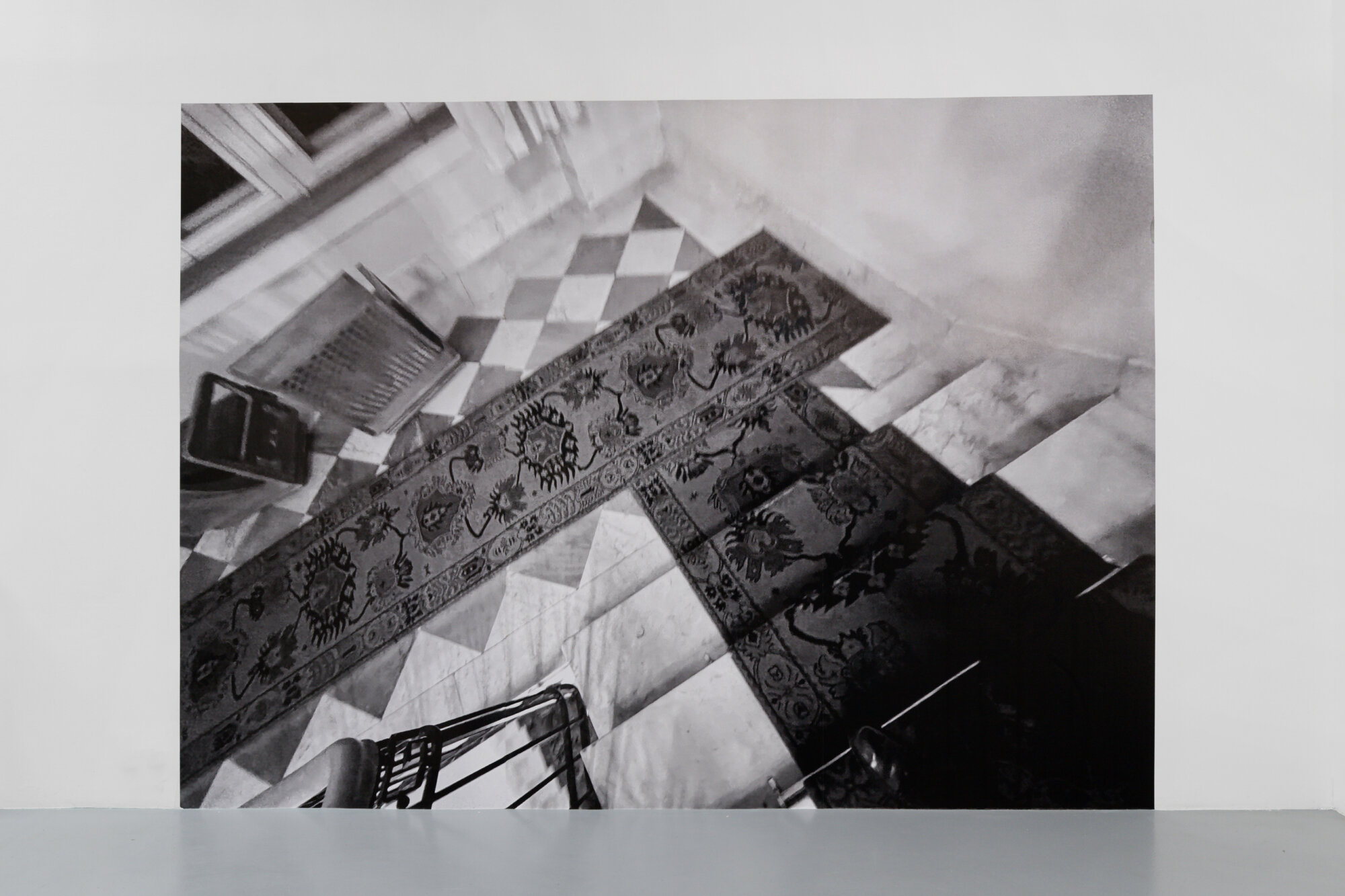
Gina Fischli
'Untitled', 2023
Wallpaper, Dimension variable
Unique
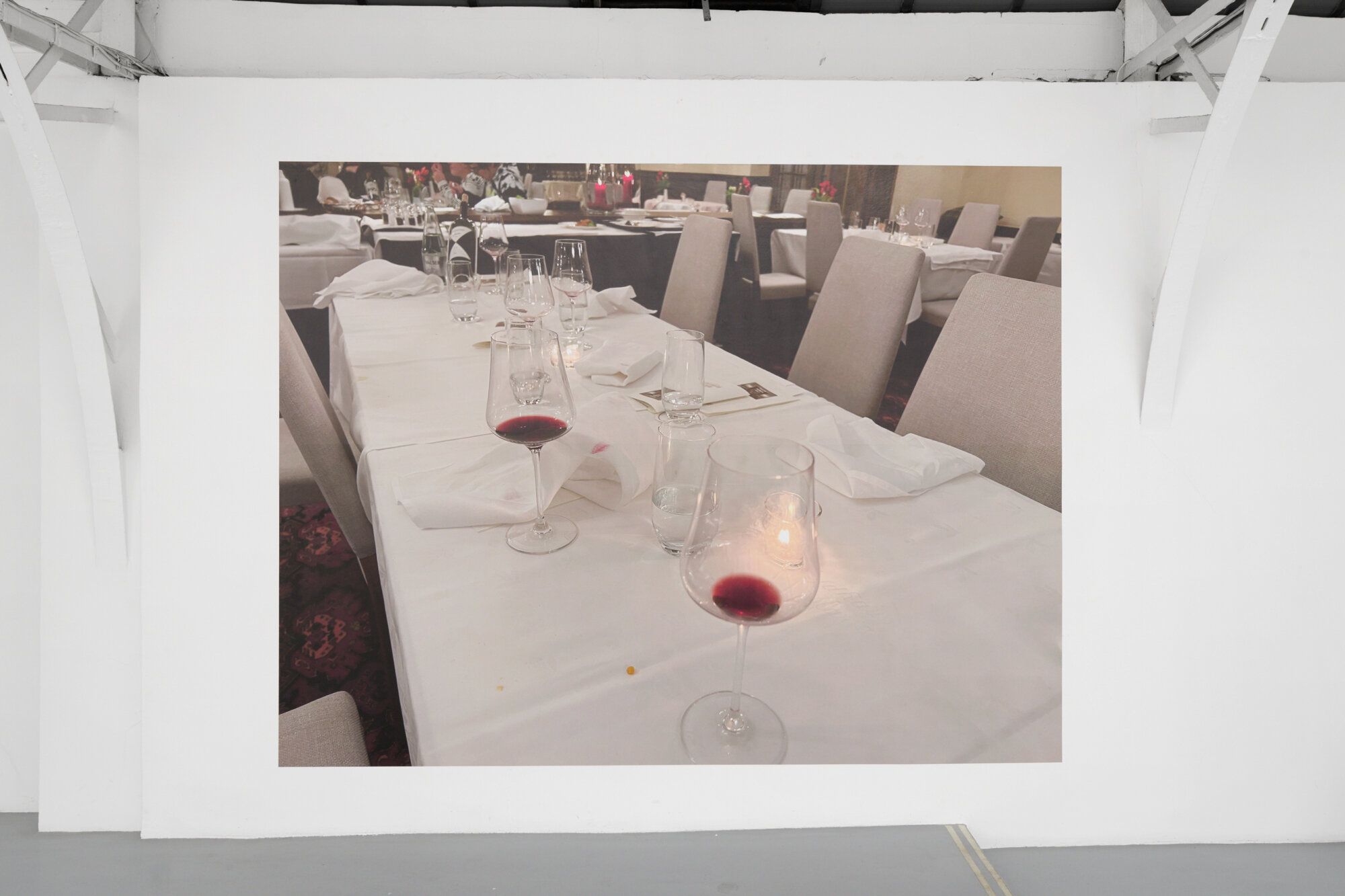
Gina Fischli
'Untitled', 2023
Wallpaper, Dimension variable
Unique
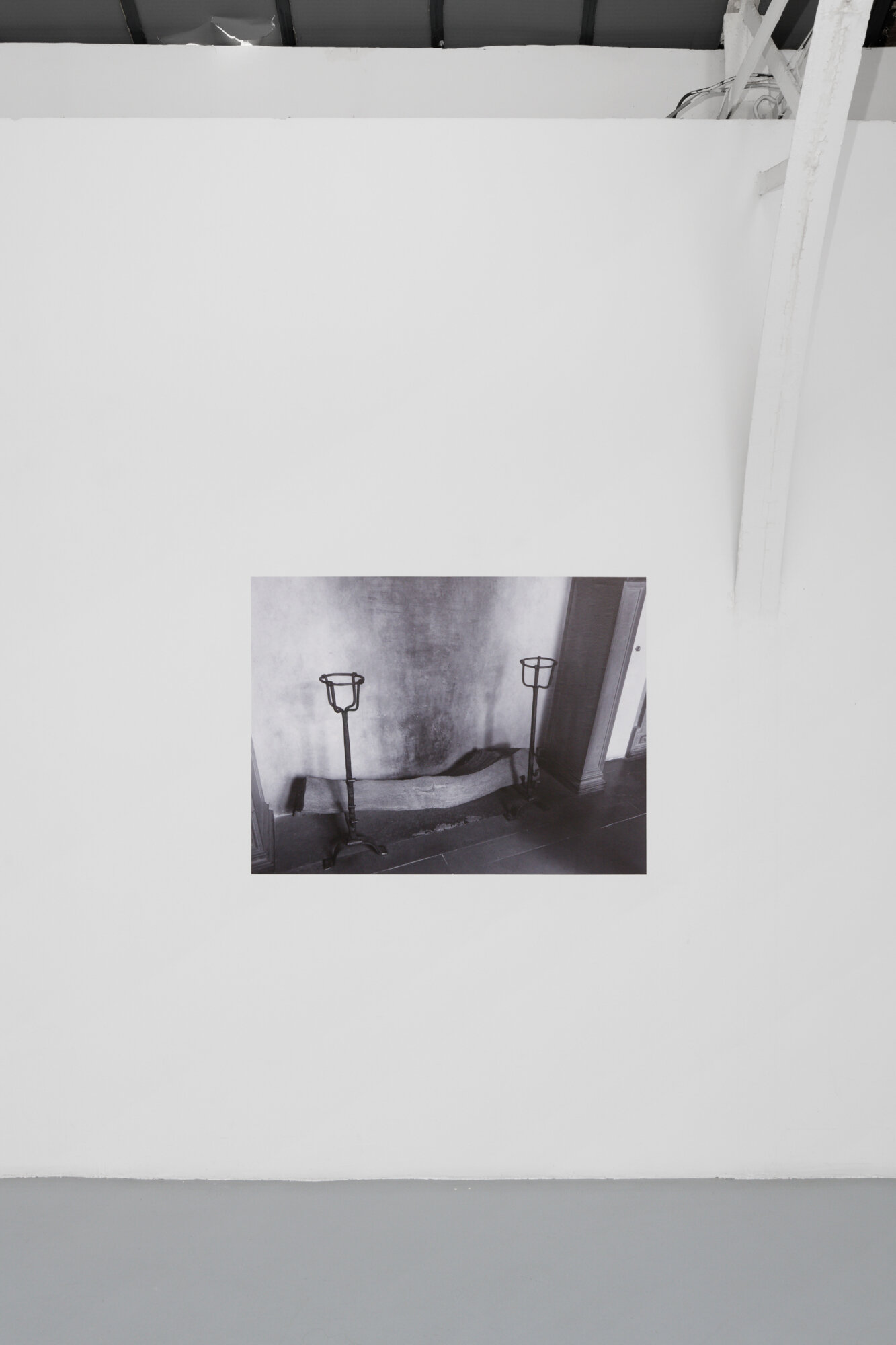
Gina Fischli
'Untitled', 2023
Wallpaper, Dimension variable
Unique
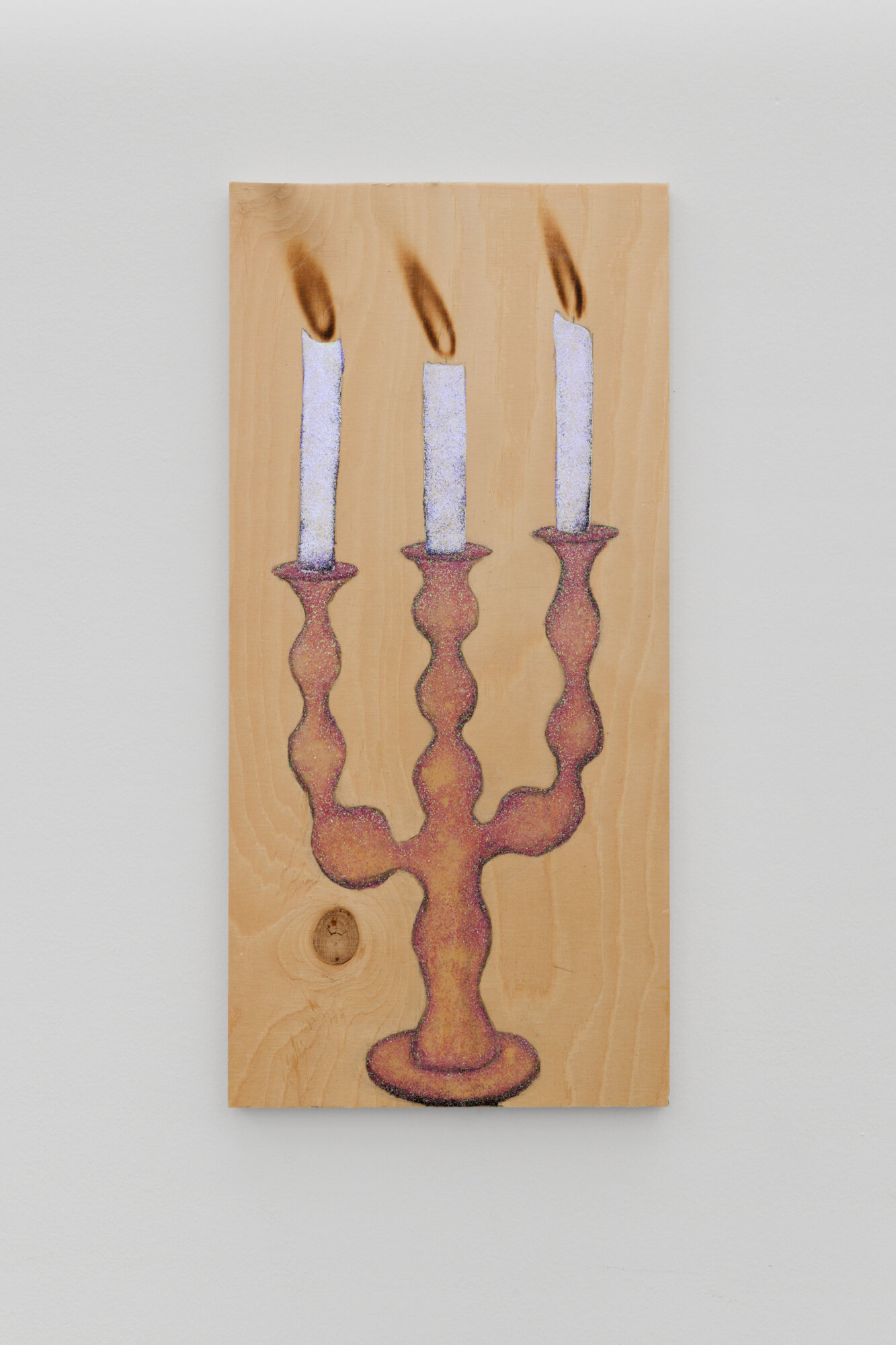
Gina Fischli
'Untitled', 2023
Plywood, glue, glitter
42.5 × 20.5 × 2 cm
Unique
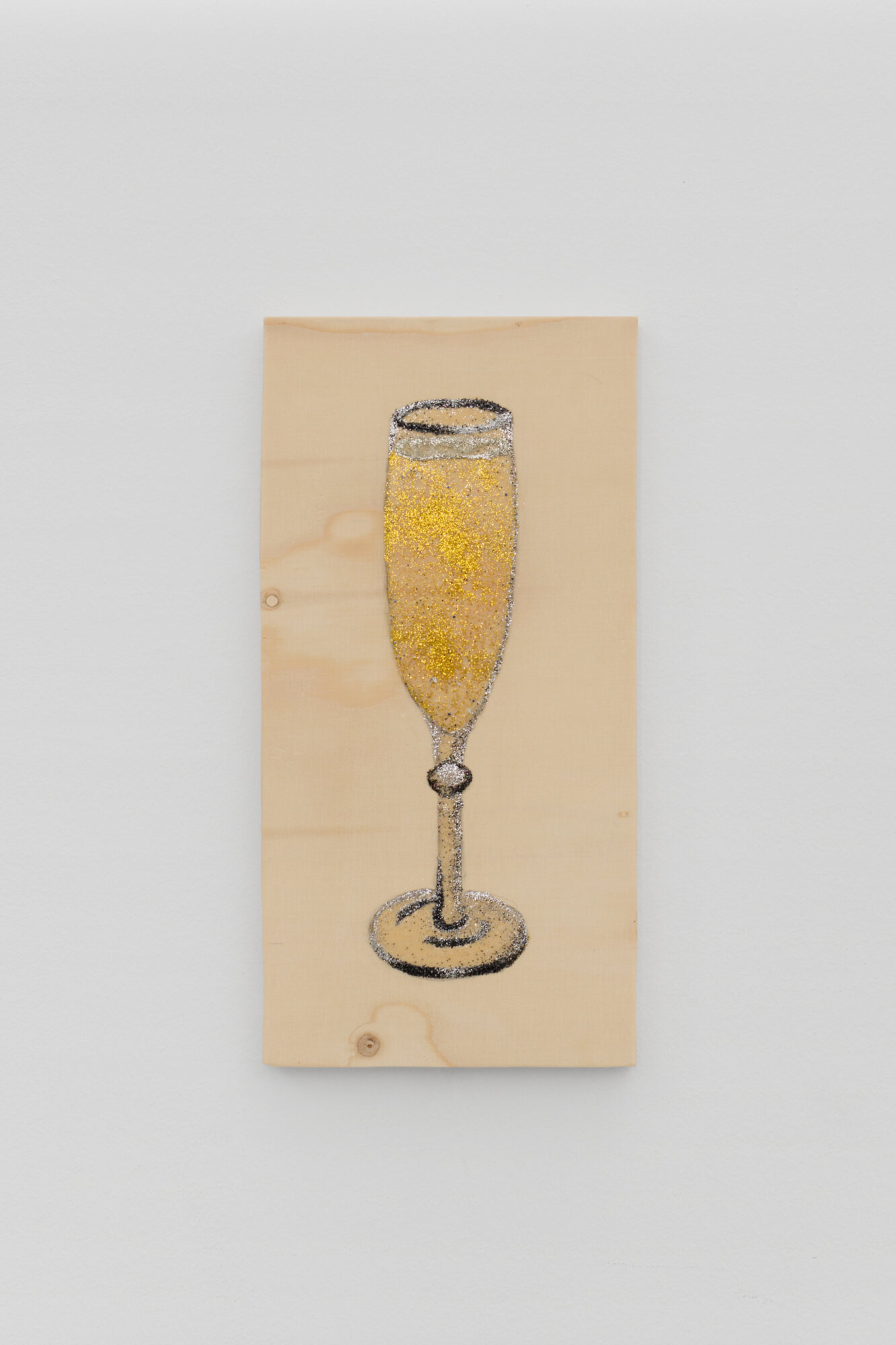
Gina Fischli
'Untitled', 2023
Plywood, glue, glitter
28 × 14 × 2 cm
Unique
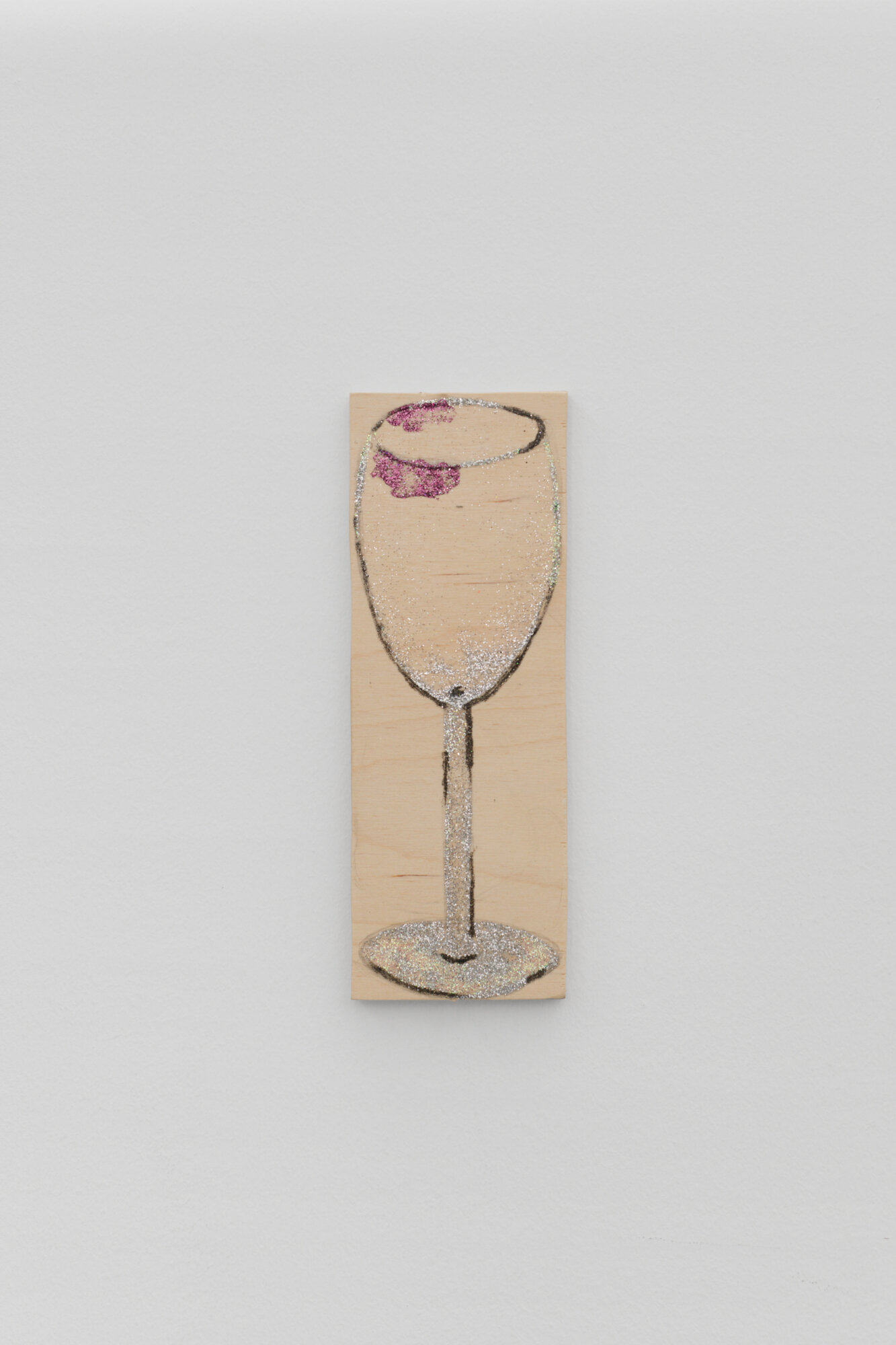
Gina Fischli
'Untitled', 2023
Plywood, glue, glitter
20 × 7.5 × 2 cm
Unique